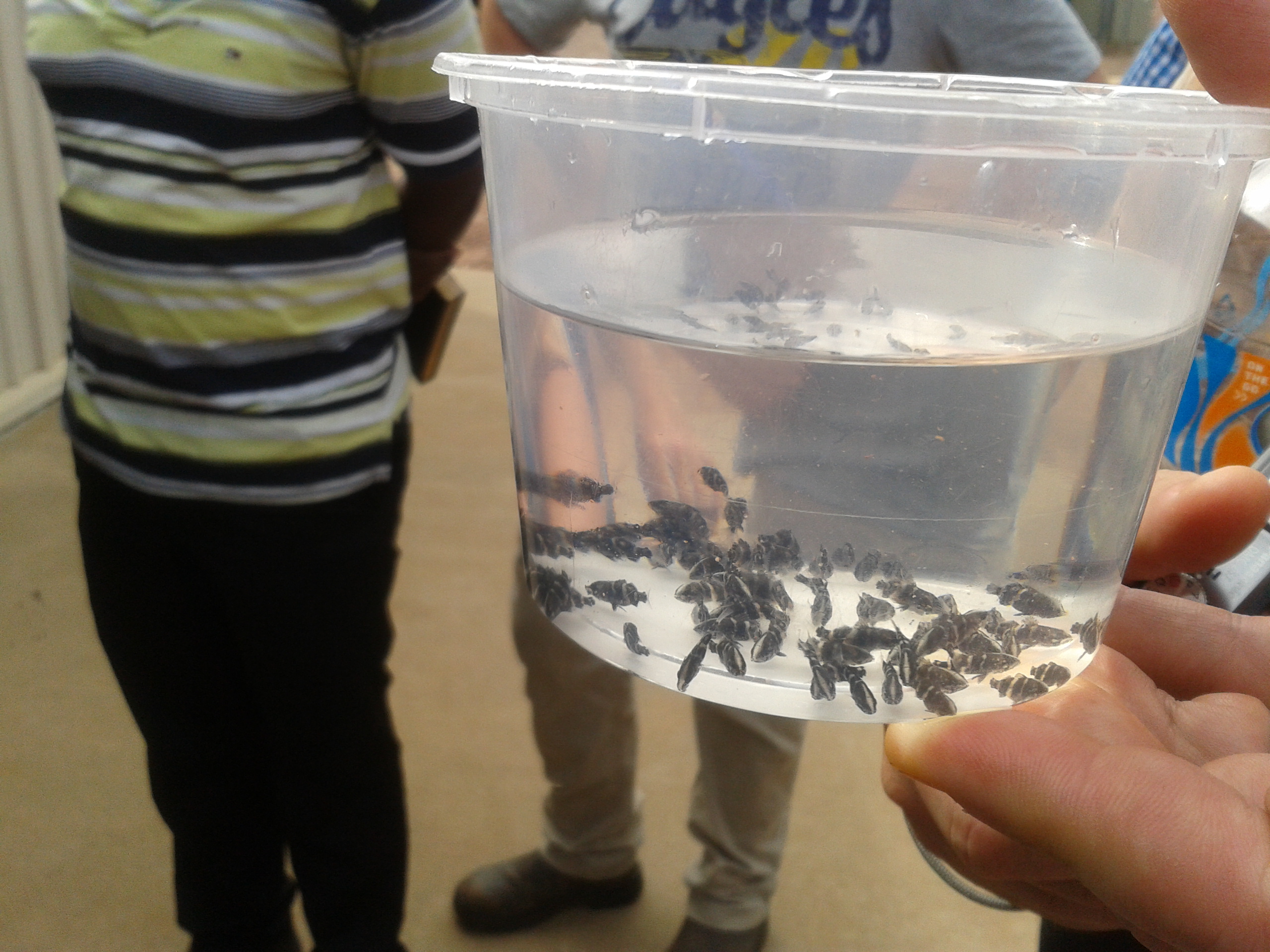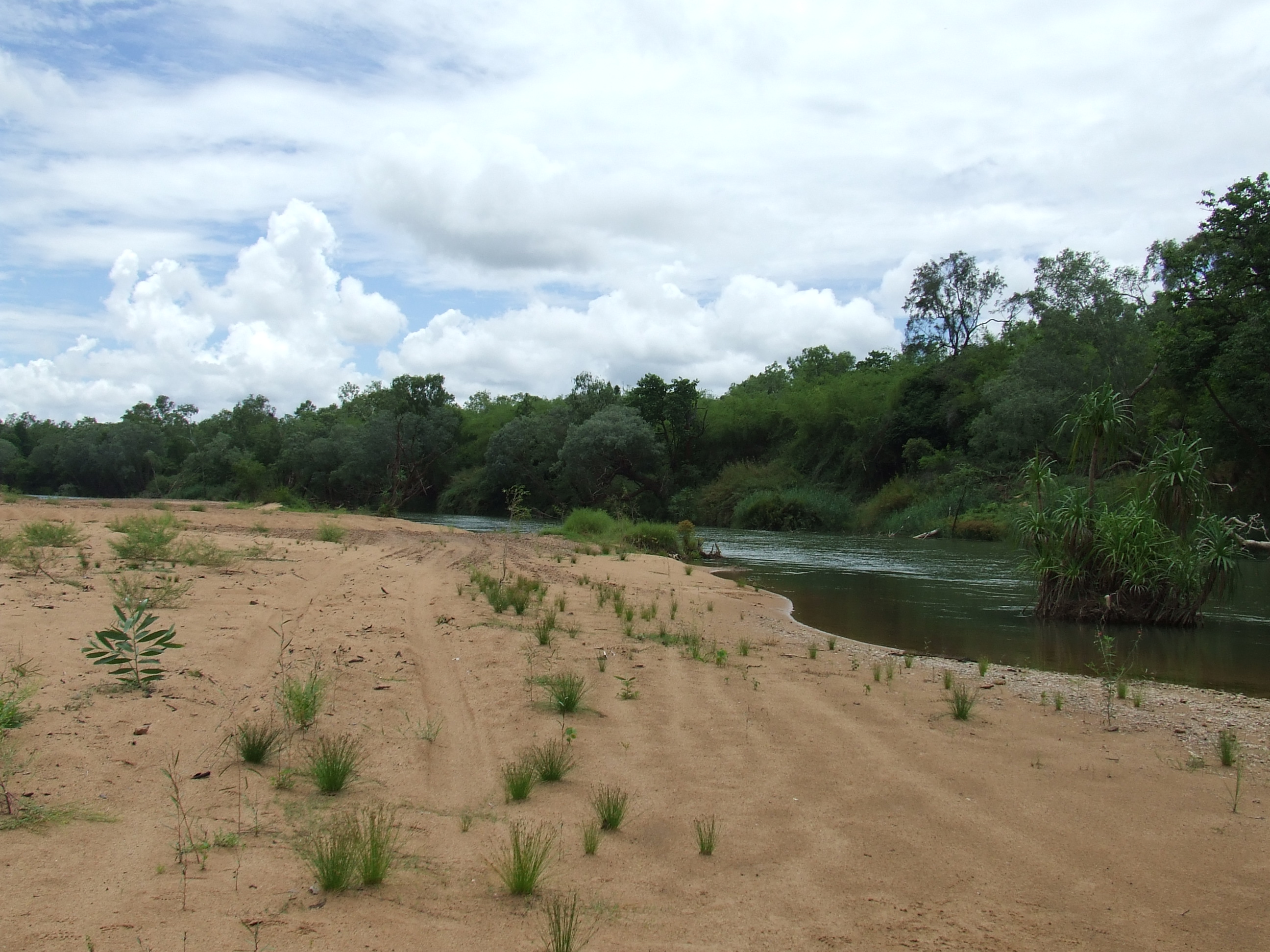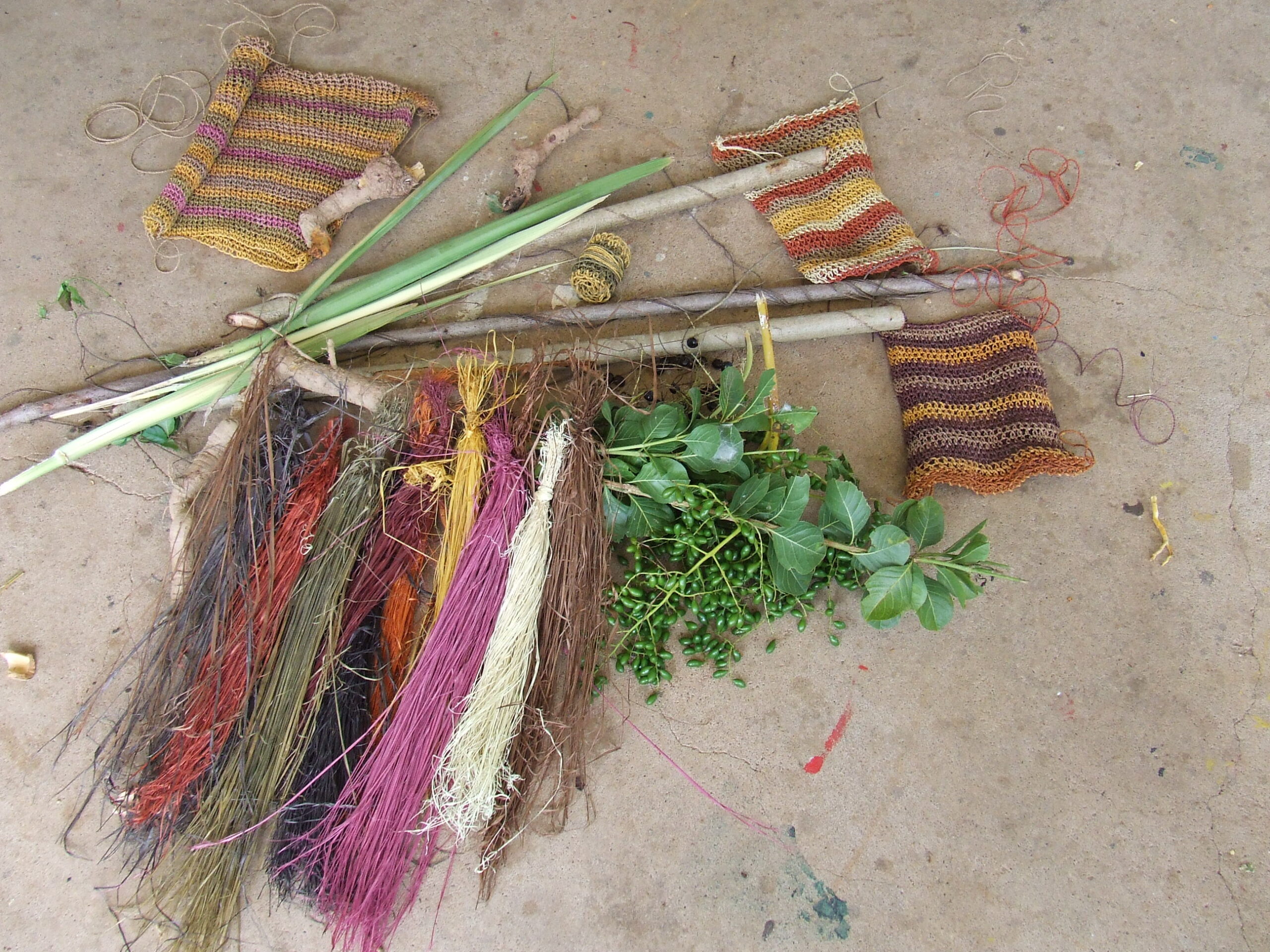By Nerida Haynes
For us, country is a word for all the values, places, resources, stories and cultural obligations associated with that area and its features. It describes the entirety of our ancestral domains. All of it is important – we have no wilderness, nor the opposite of wilderness, nor anything in between. Country is country – the whole cosmos. ~Mick Dodson, Indigenous Australian Leader
Working in Natural Resource Management (NRM) at Terra Rosa CRM enabled me the chance to take part in the Natural Resources and Indigenous Livelihoods course at Charles Darwin University.
As an Indigenous woman from Kokatha-Mirning land in South Australia, an urbanised Indigenous culture in comparison to other Indigenous communities in the Northern Territory, northern and Central Australia, I was intrigued to see what the week would bring. Would the course give me substantial knowledge, ideas and tools that I could transfer to our core business at Terra Rosa CRM? And would it provide me with monitoring, evaluation and reporting model/s to compare the National MERI toolkit to? I was soon to find out…
The five day course was being presented by Julian Gorman, Dr Owen Stanley and Natasha Stacey from the Charles Darwin University’s Research Institute for the Environment and Livelihoods Unit. The unit works throughout northern Australia and Indonesia with Indigenous peoples.
A range of people attended the short course – mostly were PhD students from all over Australia but three were from Tanzania, Zimbabwe and Indonesia. Several NRM professionals from Victoria and New South Wales were also on the course.
Lectures ranged from – differing world views to how land management agencies across Australia are now incorporating Indigenous land management into their decision-making process; the conventional theory of economic development; joint management of Indigenous Protected Areas; Indigenous Ranger programs and more.
Capacity Building tools
Various tools were presented to the class over the week including the Sustainable Livelihoods Approach; Aboriginal Research Practitioner Network’s (ARPNet) DillyBag and NAILSMA’s I-Tracker.
The core of the Sustainable Livelihoods Approach is the ‘capital’ or ‘assets’ pentagon – which is generally comprised of human capital, natural capital, financial capital, physical capital and social capital. Policies, institutions and process are influenced by these assets which determine the livelihood outcome.
Michael LaFlamme is a CSIRO Socio-Ecological Scientist with extensive work research and history in the Central desert communities of Australia and has developed his own Sustainable Livelihood model. LaFlamme (2007) found during personal interviews and research in those Indigenous communities of Australia that their ‘Assets’ pentagon was comprised of completely different sets of values. Central and most important to the Indigenous people of those communities was their land. The other assets – customs and law, ceremonies, language, kinship and spirituality were all dependant on the land and you could not have one without the other.
This tool is implemented during the initial contact with the community and referred back to throughout the duration of the program you are delivering.
The Aboriginal Research Practitioners Network (ARPNet) is a network of Aboriginal people located in remote communities and town camps in the top end. The members of the network (30) have received basic training in Participatory Action Research and are able to conduct basic research, evaluation and planning activities using participatory methods. They have also received training in the use of quantitative tools like questionnaires thus are versatile in a number of research areas.
The network was formed due to Indigenous people becoming “tired” (ARPNet, 2013) from being researched and analysed as well not receiving information/recommendations from research bodies. Communities realised they could do the basic research themselves and in turn, empower their people.
The North Australian Indigenous Land and Sea Management Alliance Ltd (NAILSMA) presented their I-Tracker Project (I-Tracker is short for ‘Indigenous Tracker’). It is a project that supports Indigenous land and sea managers across North Australia to undertake natural and cultural resource monitoring, research and management activities using digital technology and equipment. I-Tracker provides training and support to Traditional Owners and Indigenous ranger groups through their qualified Natural Resource Management staff.
Essentially NAILSMA has taken the award-winning ‘CyberTracker’ program and modified it after the ranger programs have given them feedback from their sea and land patrols. Below is an example of various programs the Cybertracker is used for:
- Fire: controlled burning, fire surveys
- Weeds: weed sightings, surveys, treatment, species ID
- Feral Animals: sighting, surveys, monitor damage/impacts
- Biodiversity: monitoring native plants and animals
- Visitor Management: visitor information, camping permits, campsite maintenance
- Feral buffalo management;
- Shorebird monitoring in northern Australia;
- Freshwater health monitoring; and
- Turtle and dugong monitoring.
Most importantly the ‘Cybertracker’ program is free to download and is user friendly.
A variety of partnerships can be formed to build a community’s economic capacity
Day three was a field trip out to Darwin Aquaculture Centre managed by the Department of Fisheries (NT). Manager, Sue Rowling walked us through the centre and showed us their Barramundi (Lates calcarifer) tanks which hold their resident fish and breeders and other aquaculture projects.
The Department of Fisheries were instrumental in fostering their relationship with Indigenous communities in a capacity building role. This enabled the communities’ opportunities to explore viable economic aquaculture ventures or become self-sustainable.


Giant Clam and Sea cucumber harvesting are two projects that are being researched and trialled with communities in Arnhem Land. The Giant clam meat (Tridacna squamosa) project is primarily aimed at providing the community a food source whereas the Sea cucumber is aimed at providing an economic venture. Sandfish or Sea Cucumber (Holothuria scabra) is the most valuable species and has been successfully cultured in many Asia-Pacific countries such as China, the Philippines and Fiji.
The non-tourist Crocodile farm enterprise showed the Indigenous partnership in a different capacity.The crocodiles were kept individually in a space of approximately 1.5m length x 0.5m wide x 0.8m height where theyare farmed to become Hermes’ or Louis Vuitton handbags (which are sold at a minimum of $30,000 in the European countries). The skins of the crocodile are sold at $1000 each.
The ‘relationship’ between Indigenous communities and the farms is at the very start of the value chain – the communities receive between $20-$40 per crocodile egg. However this is only if the animal is still alive when the farm receives the eggs. Unfortunately no cameras were allowed on the farm.
Giovanna Webb won the 2013 National Rural Womens’ Award from the Rural Industries Research Development Corporation for her role in empowering Indigenous women to be a part of a Crocodile farming enterprise (including the farm we attended). This enterprise would include high-value products such as handbags, wallets, purses and belts. Watch this space!
Community engagement – the peoples’ needs and aspirations are most important
We headed back to the university to talk about aligning research and development with community needs and aspirations. For me this truly resonated with how Terra Rosa CRM is a leader when working collaboratively with Traditional Owners.
The lecturers emphasised that all natural resource project work needed to have input from Traditional Owners especially for the project to be successful. The projects have to show how the Indigenous community want to manage their land and to live on their land but conserve their culture first and foremost.
Many projects in Indigenous communities have been unsuccessful due to them involving large projects originating outside the community, others have used a top down approach and not engaged with the community or they’ve used unfamiliar products. The governance structure has not taken into account the myriad ways of Indigenous communities.
A wonderful experience with the creative minds of the Merrepen Arts Centre
A field trip out to Daly River on our second-last day was the highlight. We met the Traditional Owners on the bank of the Daly River near Naiyu and were given a welcome to country.

The community at Naiyu run a successful natural resource enterprise called Merrepen Arts. The Art Centre opened in 1986 and the artists are famous for their etchings and printmaking but also produce a number of artefacts in addition to paintings, using a multitude of materials and techniques in their creative expression.
Using zinc plates, or lino plates, coloured ink and a press machine they produce etchings and prints, batik techniques using wax and silk painting to make t-shirts, scarves and sarongs, paper-mâché techniques to make bowls and animal figures, screen printing for tea-towels and other kind of fabric and weaving of Merrepen and Pandanus leaves to make dilly bags, fishnets, baskets and sun mats.
Whilst this enterprise is primarily female-based there are a small number of men that work here too. The community has also been running the Merrepen Arts Festival for the last five years.
Our group was shown how to take the pandanus leaves apart and weave them. One dillybag can take approximately one month or even longer to make! The dyes are sourced from various plants and flowers near the community but also as far as Katherine. The group ensures they have enough material to last them through the wet season.

Monitoring, Evaluation, Reporting and Improving….
Content on the last day was an area I was particularly interested in – monitoring, evaluation, reporting and improvement. The last decade has seen a convergence of interests between western scientists and Indigenous land owners. Accountability and responsibility of the land managers to report and evaluate their programs has been an area of concern Australia-wide as it has had insufficient support and/or was not done at all.
A case study was presented whereby four jointly managed Indigenous Protected Areas in Northern Australia were collaboratively measured on their performance. This was done over three years and involved four phases –
1/ Preparation – identifying representatives, meetings, workshops with partners to develop the participatory approach, identification of the management outcomes and indicators to be monitored, sources and methods of information collection, training of partners;
2/ Data collection – through key informant interviews, stakeholder group interviews and a review of documents;
3/ Analysis and interpretation;
4/ Feedback and validation of the assessment to partners.
The Sustainable livelihoods approach was used as a tool in this research. The research showed that it is a reflection of the current status of joint management and one would expect that the indicators and the performance against them will evolve as time progresses.
Overall I found the course full of immensely useful tools and a great opportunity for me to liaise with like-minded people. To me, the field trips and case studies presented showed that the partnerships formed with Indigenous communities and stakeholders need to be nurtured and supported – whether they are economic enterprise based or an Indigenous ranger program funded through Native Title Agreement. Trust has to be gained through a nurtured partnership, people need to be inspired and empowered and ultimately feel that they have the ownership of the project within their country.
If you’d like any further information on what I’ve briefly covered here, please email me on [email protected].
References:
Charles Darwin University – RIEL
Check out the ARPNet Dilly Bag in Ngukurr video
North Australian Indigenous Land and Sea Management Alliance (NAILSMA)

